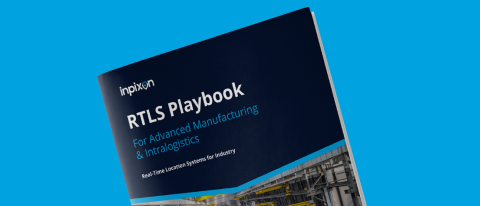The threat presented by wireless devices in sensitive areas is growing and as such, security measures need to evolve. Malicious actors can use the cameras, microphones, storage and networking features to capture and steal state secrets and industrial IP. Workers distracted by their phones can injure themselves or others, or cause damage to equipment and processes in industrial environments.
Security-conscious organizations are seeking out solutions that allow them to monitor and secure their space against the growing threat of rogue access points, mobile devices and other wirelessly enabled devices, and enforce policies that prohibit phones and other wireless devices in sensitive or hazardous areas. Geofencing is a valuable tool that can help enhance visibility of these devices where it’s needed most.
What is geofencing?
Geofencing is a location-based technology in which virtual boundaries can be assigned to a geographical area in the real world. These virtual perimeters can be displayed on an indoor map and can trigger actions or alerts on entry, exit or dwelling within the specified area.
While geofencing is most commonly discussed in a marketing context, the ways in which these virtual boundaries can be used is extensive. For example, organizations can leverage indoor geofences to monitor traffic within a certain area of a building, making it a particularly useful tool for everything from enhancing security systems to optimizing workspaces.
How does geofencing technology work?
Geofencing platforms leverage varying types of device detection techniques like Wi-Fi, cellular, GPS or
RFID signals to determine when a mobile device or tracking tag enters or exits a virtual boundary set up around the specified geographical location within the covered building. Geofences can be drawn in any shape or size and are associated with secure areas or rooms that follow more restrictive policies. Within government and other high-security focused areas, geofencing can provide alert triggers based on positioning signals within these secure zones and help direct TSCM or other personnel to the incident.
Geofencing applications for building security
The different applications of geofences for security personnel include being able to:
- Discover and visualize the real-time location of transmitting wireless devices
- Manage no-phones zones for security and safety applications
- Receive alerts when devices move in and out of zones
- Trigger mobile device management (MDM) policies that restrict device usage in high-security areas
- Discriminate between permitted and unknown devices
Infrastructure requirements for geofencing security
There are a few pieces required for effective geofencing security implementations. The solution will require equipment deployed on-premises and air-gapped from the production networks. This equipment will consist of sensors, network switches, Cat5/6 cabling and server to host the Aware software. If the solution is truly air-gapped, an additional viewing station will be required for launching the Aware website. Once the solution is installed, administrators will configure the indoor device detection technology to monitor and analyze the transmitting environment of a building, enabling the visualization of the radio frequency (RF) environment in the context of a floor plan.
What are the next steps to deploy your own geofence solution?
- Think about your spaces or rooms you need to protect
- Strategically plan RF security policies and procedures
- Call Inpixon today for an evaluation and demonstration of geofencing solution!
While there are some small obstacles, geofencing for the most part is very accurate and can be used for a multitude of security aspects. By using Inpixon Aware, organizations can reap the benefits of geofencing and automate alerts in your most sensitive spaces.

WHITE PAPER


-3.png?length=1000&name=Inpixon%20LinkedIn%20Banner%20August%202025%20(2)-3.png)

